Month: April 2014
Robert Redford renews fight to release jailed AIM activist Leonard Peltier

Tells Sunday Edition host Michael Enright he is pushing for a pardon from Obama
By Michael Enright, CBC News Posted: Apr 06, 2014
On June 26, 1975, two FBI agents drove onto the Pine Ridge Indian Reservation in South Dakota.
Jack Coler and Ronald Williams were looking to arrest a man named Jimmy Eagle, who was suspected of stealing a pair of cowboy boots.
Pine Ridge had been a nightmare of violence, intimidation, murder and mayhem almost on a daily basis.
There had been more than 60 killings in just a couple of years in confrontations between members of the activist American Indian Movement, and groups of thugs who controlled life on the reservation.
What happened after agents Coler and Williams neared the Jumping Bulls ranch on the reservation is a matter of long-standing dispute.
Gunfire broke out. Coler and Williams took cover behind their car, but their small-calibre service revolvers were no match for the high-powered rifles raining down fire from a small mesa above their vehicle.
Both agents were killed. Some witnesses said that after being mortally wounded they were executed with rifle fire to the head.
That November, four Indians, including an Anishinabe Dakota activist named Leonard Peltier were indicted for the murders of Coler and Williams.
Peltier managed to escape custody and fled to Canada, to Hinton, Alta.
The following February he was arrested by the RCMP and transported to Vancouver to await the outcome of an extradition hearing. In June 1976, the Canadian government authorized his extradition.
That next month, the others accused of the murders were acquitted. But a year later, on April 18, 1977, a jury in Fargo, N.D., found Peltier guilty of murdering the two FBI agents. He was sentenced to two consecutive life sentences.
Incident at Ogalala
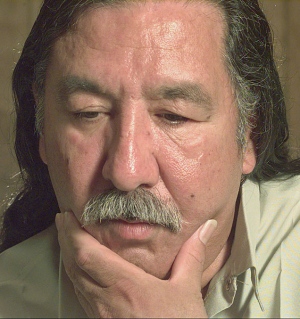
There has been a decades-long dispute about whether Peltier killed the two FBI agents. Before he died, Bob Robideau, one of the men acquitted in the shooting, admitted he killed both men.
But Peltier has stayed locked up, despite pleas from such luminaries as the late Nelson Mandela, the Dalai Lama, retired South African archbishop Desmond Tutu and the actor and director Robert Redford to have his sentence commuted.
Redford’s 1992 documentary, Incident at Oglala, recounted the facts of the case and focused in on Peltier’s trial. Now that Peltier is in poor health, Redford and others are renewing their efforts to draw attention to the case.
“I felt that he did not receive a fair trial,” he tells The Sunday Edition this weekend.
But when Redford first visited Peltier in prison, he was initially skeptical.
“I was trying to be neutral in my feelings about him. I didn’t want to be taken in by anything. I did feel that of course there would be desperation to a person in prison trying to get the word out.
“But I came out of it very sympathetic,” Redford now says.
Subsequent investigations over the years have shone a disturbing light on the tactics used by the FBI in their handling of the incident.
Naturally, the bureau was incensed that two of their young agents had been cut down in cold blood. Redford says the FBI wanted “an eye for an eye.”
Documents released subsequently under freedom of information legislation have shown that the FBI tampered with evidence, in one instance manufacturing testimony.
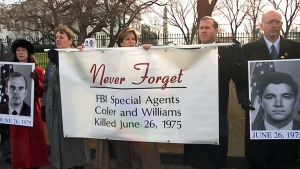
This referred to the affidavit of a woman named Myrtle Poor Bear who testified she saw Peltier shoot the agents.
Later investigation showed that Poor Bear had been threatened by FBI agents, and that she had, in fact, never laid eyes on Peltier.
At a hearing before the Eighth Circuit Court of Appeals in 1978, the U.S. attorney at the time admitted that, “We don’t really know who shot the agents.”
Nevertheless, the judges rejected Peltier’s appeal.
Peltier is currently being held in the maximum security wing of the Coleman Federal Penitentiary in Florida.
His health is weak. He suffers from diabetes and has had prostate trouble. A few years ago, he was beaten badly by some inmates.
He will be 70 next year. Redford’s hope is that President Barack Obama will grant Peltier a pardon or commute his sentences. Redford had tried earlier to get then president Bill Clinton to pardon Peltier, but Clinton wouldn’t do it.
Peltier has told friends and supporters that he wants to die at home, and Redford is optimistic.
However, Obama has granted fewer pardons than any other president including the two Bushes.
But as Redford told The Sunday Edition: “I am very hopeful and will raise my voice in any way.”
Stand with Indigenous Peoples, Stop the Pipelines

As so often happens, Native Americans are leading the fight to save the world.
By Will Falk, San Diego Free Press
While half of the world’s species are disappearing, while the remaining 48 hunter/gatherer societies are literally fighting for their survival, while 32 million acres of rainforest are cut down a year, and while three hundred tons of topsoil are lost a minute, we are again at war with those who would destroy the planet.
There have been many wars fought on behalf of our life-giving land in North America. The overwhelming majority of those killed in defense of the land have come from peoples like the Sioux, the Cheyenne, the Nez Perce, the Sauk, and the Apache. Native Americans have long stood in the way of this destructive culture. It is time that we join with Native Americans and other dominated peoples around the world who are at war. It is time that we, the privileged in this settler culture, step off our pedestal and onto the battlefield to place our bodies in harm’s way like so many indigenous people have before us and continue to do today.
***
As a young white radical, I have admired the long traditions of resistance found in Native communities. I find myself wondering what could have been had Tecumseh won or if Crazy Horse was not betrayed. I find myself wishing I could have been there with Geronimo or King Phillip or Chief Joseph to shoot back at the pale skin and pale blue eyes I share with so many of the soldiers, miners, and settlers who have butchered Native peoples over the centuries.
But, mostly, my heart just breaks. And breaks and breaks again when I recall the long list of lost battles and cold-blooded massacres.
My heart breaks when I think of that frigid morning in December, 1890 when Lakota Sioux led by Spotted Elk woke up next to Wounded Knee Creek in South Dakota to find themselves surrounded by 500 soldiers of the US 7th Cavalry. Some of the older women and the frailest children would have been wrapped in robes made from the skins of buffalo hunted to near extinction by the very soldiers taking positions over the camp.
They look up at the four rapid fire Hotchkiss guns pointed down on them from the hills above with their frosty breath foreshadowing the thick fog of gun smoke that would blanket the field in just a little while.
My heart breaks again looking at the photographs of Lakota men, women, and children strewn across the frozen ground. I see Spotted Elk’s body frozen in a half-sitting position in the snow. His legs bent one way, and his bullet-riddled torso bent another way. His arms curl up as his dead biceps tighten in the cold.

My heart breaks when I read eyewitness accounts from the Sand Creek Massacre in 1864 where Colorado-territory militia killed 200 peaceful Cheyenne and Arapaho men, women, and children who thought they occupied their camp under the protection of the US Army. I read of soldiers putting six-shooters to the heads of infants and “blowing their brains out.” I watch as white men jump off their horses with knives in hands to cut ears, noses, fingers, and testicles off corpses to take home as souvenirs.
***
Lierre Keith, the brilliant environmental and radical feminist writer, often diagnoses the problem with modern mainstream environmental activism saying, “We’ve got to stop thinking like vandals and start thinking like field generals.”
If we are to have any chance of surviving the devastation, we must espouse courses of action based on strategic objectives. In other words, we have to act like we’re fighting to win a war.
Even mainstream environmentalists recognize that one of the biggest threats to life on Earth is the use of fossil fuels. The burning of fossil fuels releases carbon dioxide – the worst of the greenhouse gasses responsible for climate change. Scientists predict an 11 degree Fahrenheit average temperature rise by 2100 due to the effects of runaway greenhouse gas emissions.
If we are going to win this war of survival, we are going to have to stop both the present use and spread of fossil fuels. Many argue that the task is impossible. Many argue that we’ll never get people to voluntarily give up fossil fuels. We fill our cars with gas. Homes are heated by coal. The plastic screens we read the daily news on are made with oil. Giving up fossil fuels means giving up our very way of life.
But, what if the world is forced to give up fossil fuels because they cannot get access to them?
***
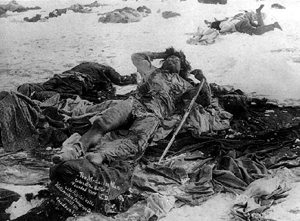
The truth is the fate of the world is bound up in wars like the ones being fought by the Sioux and their allies and the Wet’suwet’en. The United States was built on stolen land and is maintained through the theft of indigenous resources both at home and abroad. So, not only should mainstream environmentalists pledge their support to indigenous peoples to reverse genocidal historical trends, they should throw their bodies down next to indigenous peoples in order to survive.
The brutally brilliant Confederate cavalry general, Nathan Bedford Forrest explained the simple key to winning battles when he said, “Get there first with the most.” On a Civil War battlefield, this meant identifying strategic locations to be controlled and then arriving with more soldiers and firepower than your enemy. At the Battle of Gettysburg, for example, Union forces recognized the way two hills – Little and Big Round Top – on their extreme left flank commanded a view of the entire battlefield. Robert E. Lee and his right hand infantry general, James Longstreet, recognized it, too. Whoever controlled those hills could place artillery on their heights and rain deadly cannon fire on enemies in the fields below.
Ultimately, Union forces arrived at the top Little Round Top just minutes before Longstreet’s infantry and were able to beat off a Confederate attack, turning the tide of the battle in favor of Union forces in what many historians call the pivotal moment of the entire war.
The goals of these camps line up perfectly with Forrest’s idea to “get there first with the most.” The camps are being set up in strategic locations to stop the ability of the pipeline to function. If the oil is going to flow, big oil pipelines are going to have to defeat activists dug in at these camps.
Right now, indigenous peoples and their allies are there first with the most. They can win if we help them.
***
As so often happens, Native Americans are leading the fight to save the world. Battle lines are being drawn in British Columbia and South Dakota where indigenous peoples and their allies have vowed to prevent the construction of pipelines carrying fossil fuels across their lands.
In South Dakota, the Oglala Lakota and Rosebud Sioux (many of whom descend from the survivors of the Wounded Knee Massacre) are building resistance camps to combat the Keystone XL pipeline. They are calling the pipeline “the Black Snake” and are operating the Moccasins on the Ground project where participants are trained in the skills, tactics, and techniques of nonviolent direct action. These skills include blockading heavy equipment, workshops on strategic media, street medic training, knowing your legal rights with respect to civil disobedience, and building solidarity and alliances.
In British Columbia, the Wet’suwet’en have dug into the path of seven proposed pipelines from the Tar Sands Gigaproject and LNG from the Horn River Basin Fracturing Projects in the Peace River Region at Unist’ot’en Camp. (http://unistotencamp.wordpress.com/no-pipelines/) Unist’ot’en Camp is calling for volunteers to help patrol their land, build permaculture, and raise permanent bunkhouses in the path of the pipelines.
***
There’s another feeling I get when I think of the massacres of indigenous peoples. It is even stronger than the staggering sadness. It is the desire to do whatever it takes to stop this culture from destroying indigenous cultures and destroying the land.
I used to imagine that I could go back in time and offer my help. I would learn how to shoot and offer my rifle to Crazy Horse or learn how to ride and ask Chief Joseph if he could use my help. As I listened to the rhythmic thump of soldiers’ boots marching on where they thought my friends’ village was, I would imagine approaching a fat officer in a powdered horse-hair whig with a smile coming from my white face. I would tell the officer I knew where the Indians were, only to lead him on a wild goose chase while he trusted me because I was white.
I have grown up now. I realize that there are wars being waged against the land and those who would protect the land. I realize that I can work to stop the black snakes that are being built to slither through this land, to choke her original people, and to wring the last few drops of oil from her.
All of us who have benefited from the rape of the earth and the destruction of so many of her people are being called. We are being called to kill the black snakes by those already engaged in mortal combat. We must do whatever it takes to stand with indigenous peoples and stop the pipelines.
Tulalip Tribal Council swears in new leadership: Newly elected chairman Herman Williams Sr. wastes no time establishing his plans
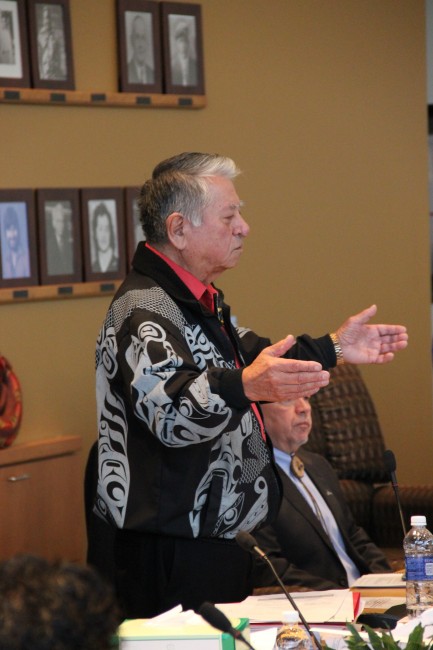
By Andrew Gobin, Tulalip News
The Tulalip Tribal Council swore in three members on Saturday, April 5 at the Tulalip Administration board room, welcoming newly elected Les Parks and Herman Williams Sr., and returning Councilman Glen Gobin. Parks and Williams have both served on the council in prior years, which may have contributed to their winning of two seats, and the appointment of Williams as Chair and the election of Parks as Vice Chair. Glen Gobin was elected as Treasurer.
Chairman Williams spoke directly, so not to waste time, mapping out his plans for changing the direction of the Tulalip Tribes, urging for tradition and culture to be the foundation of our community, once more.
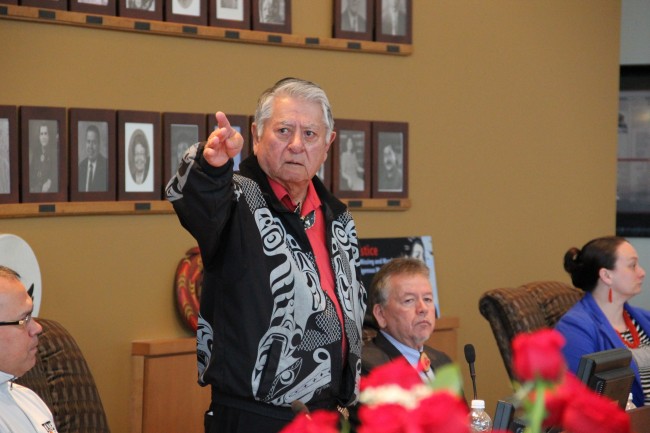
He said, “If we continue as we are, neglecting our culture and traditional ways, the man from Washington D.C. will come here and there will be no Tulalips. Without culture, Tulalip is gone.”
Williams spoke briefly about returning to the old ways of leadership, mentioning the influence of past leaders over his life and leadership.
“All these ones here behind me,” he said, motioning to the photos of all the past councilmembers, “I walked with them all in my lifetime. I may be the only one [on the council] who has had that privilege.”
The Tulalip people are a big concern as well for the new Chairman. He briefly mentioned the social dysfunction a substance abuse that plagues the Tulalip people today.
“We have our people, and we have our strength. But we have to walk together, once more. We have a lot of children born into this life of ours that have been caught in this web of drugs and alcohol. I’m gonna get this community together to take care of that. You women, you are the givers of life. But I understand that some of you are bringing children into this world that are going to have a tough time. I can’t allow that any longer. We will have to march down that road together if we want to heal,” he said.
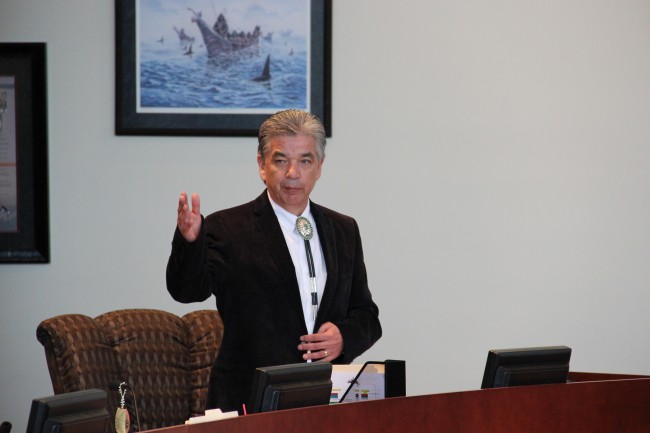
Les Parks, elected Vice Chair for the Tulalip Tribal Council, spoke, thanking the people for their support. He praised Chairman Williams for his leadership and experience, stating how honored he was to serve with him, and the rest of the council.
Glen Gobin, elected Treasurer, echoed Parks’ sentiments, honoring Williams for his past leadership and his status as the elder councilman. Gobin, who was re-elected for a fourth consecutive term, welcomed Williams and Parks back to the council after years of absence.
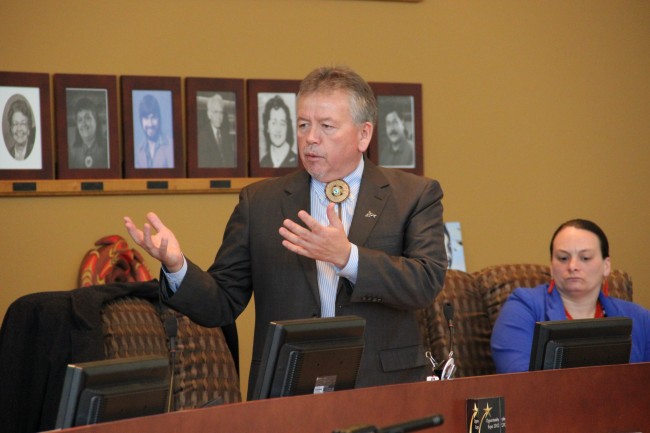
Andrew Gobin is a reporter with the See-Yaht-Sub, a publication of the Tulalip Tribes Communications Department.
Email: agobin@tulaliptribes-nsn.gov
Phone: (360) 716.4188
Spokane County commission opposes casino
Apr 09 2014 Associated Press
SPOKANE, Wash. –
The Spokane County commissioners are asking the U.S. Bureau of Indian Affairs to take another look at possible negative impacts of a proposed Indian casino near Fairchild Air Force Base.
In a recent letter to the BIA, commissioners say new information has surfaced indicating that an “accident potential zone” could be extended into the area where the Spokane Tribe wants to build its resort.
The Spokane Tribe says the casino would create jobs for tribal members and attract more businesses to Airway Heights, where the proposed project would be built.
The Spokesman-Review says the tribe’s application is before the Office of Indian Gaming, which has not indicated when it might issue a ruling.
If approved by the federal government, the casino would also require approval by Washington Gov. Jay Inslee.
- © 2014 The Associated Press. All rights reserved. This material may not be published, broadcast, rewritten or redistributed.
Tulalip family hosts Italian foreign exchange student
Article by Andrew Gobin, Tulalip News
Bernard and Sandra Duplessis and their family have been hosting exchange students for the past two years. It’s an experience that they would like to see grow on the reservation. The opportunity to see the world and experience another culture, or host a student and share your culture with them, both are ways to open yourself up to the world and appreciate your own culture.
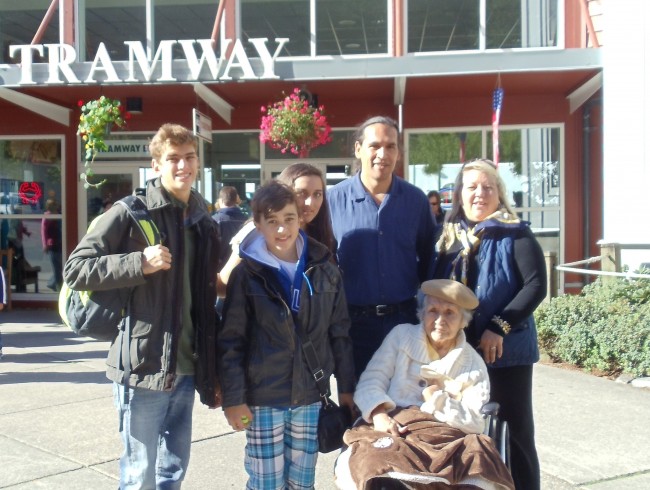
Meet Tommaso Vaccari, a 17 year old Italian exchange student from Genoa, currently attending Getchell High School. He is very outgoing and independent.
“I arrived in August of last year, and will be here for about ten months,” he said.
He lives with Bernard and Sandra Duplessis, their son, Bernard Jr., their daughter, Dallas, and Bernard’s mother, Joan. When Tommaso arrived, he spoke very little English. After learning from his host family, and from school, he speaks so well you wouldn’t know he is new to it. The way he speaks is not what you would expect either. Idioms are more pronounced, his tone changes as he uses phrases that he is more familiar with. Although you may not realize it about yourself, you probably do these same things. You really notice with Tommaso, though, as the colloquialisms of pop culture have manifested in his English, picking up slang from his peers.
The largest culture shock for Tommaso is reservation life.
“I had no idea what a reservation was,” he said, “but my father has always been intrigued by the Indians. He rides horses with a man in Genoa, who lived with Indians for some time. They go out riding together and my father learns about Indians that way. This is totally different. Here is so much different than in town.
“In September I was fishing with my host brother, and there were some [Indian] people that did not like that. They said that if you weren’t Indian you couldn’t fish. And then there were other people [non Indians] that were mad about that. Then the police came and told everyone to leave. And they told me that I could not be there. But I was with my host brother, and I had to explain to the police.”
The Duplessis family will be sad to see him go in June, when the exchange program ends.
“We consider him part of the family. He plays with our son, Bernard, and really has become a part of our lives. We talk to his family as well. They sent us a box of gifts. On Tommaso’s mother’s birthday, we arranged to send her flowers. She was thrilled. We feel like we have a family around the world in Italy too,” said Sandra.
She continued to talk about her son Bernard Jr., and how Tommaso helps him with his medical condition. Bernard is a hemophiliac and requires daily injections.
Tommaso said, “Coming here, living with these people, and helping my host brother Bernard, I want to become a doctor. I had always considered it, but coming here, I know it is what I want.”
Tommaso comes from a family of innovators and entrepreneurs. For him, his interests have always been on other fields.
Bernard and Sandra really would like to see programs like this grow. They hope that Tulalip students will be inspired to travel to other countries for schooling, to experience some of the rich cultures of the world, and hopefully to find the richness in our own culture.
If you see Tommaso out in the community, be sure to stop and get to know him a bit.
Andrew Gobin is a reporter with the See-Yaht-Sub, a publication of the Tulalip Tribes Communications Department.
Email: agobin@tulaliptribes-nsn.gov
Phone: (360) 716.4188
President Obama To Visit Oso Landslide Site

Washington National Guard
By Chris Lehman, NW News Network
President Barack Obama is expected to visit the site of the deadly landslide in Snohomish County, Wash., later this month.
The scheduled April 22 visit would be exactly one month after the disaster struck. It’s a rare visit to the region for the President, not counting political fundraisers.
Presidents often travel to the sites of natural disasters to comfort victims and encourage first responders. It’s a tradition that dates back to at least the 1960s. At that time, Lyndon Johnson famously toured the aftermath of Hurricane Betsy in Louisiana. Historians called that trip to the swing state both a humanitarian and a political gesture.
Obama declared the Oso landslide a federal disaster area. But until now, his only public comments came during his trip in Europe last month.
“I would just ask all Americans to send their thoughts and prayers to Washington state and the community of Oso and the family and friends of those who continue to be missing,” President Obama said on March 25.
The Washington Governor’s office says the President will visit families and recovery workers during his visit to the site of the landslide.
Obama last visited Washington state last November. He attended two closed-door fundraisers for Congressional candidates. He also visited the Northwest during the 2012 presidential campaign.
Tulalip Resort hosts Chance McKinney Benefit Concert: Together raising more than $16k for Oso relief effort
By Andrew Gobin, Tulalip news
Tulalip – Almost two weeks after a landslide devastated the Oso community, support for the persistent relief effort remains strong and unwavering. The Tulalip Resort Casino and country music star Chance McKinney hosted a benefit concert raising more than $16,000.

“We are charging $20 for admission, 100% of which goes to the Oso relief effort. Specifically we are donating to the Cascade Valley Hospital Foundation and Union Bank,” said Shane Warbus, Food & Beverage Operations Manager for the Tulalip Resort.
McKinney, who was exceedingly humble about the show, expressed his shock and sympathies for the Oso community.
“Who am I to throw a benefit for people in need? That is a scary notion. And what if no one shows up? But it’s the cause. And $20 admission, that’s what national headliners charge, I’m not that guy. This is all for the cause,” he said.
Ron Stubbs, a comic and hypnotist who opened the show, said, “You people that came and paid $20, donating your time and money for those victims in Oso, you guys rock.”
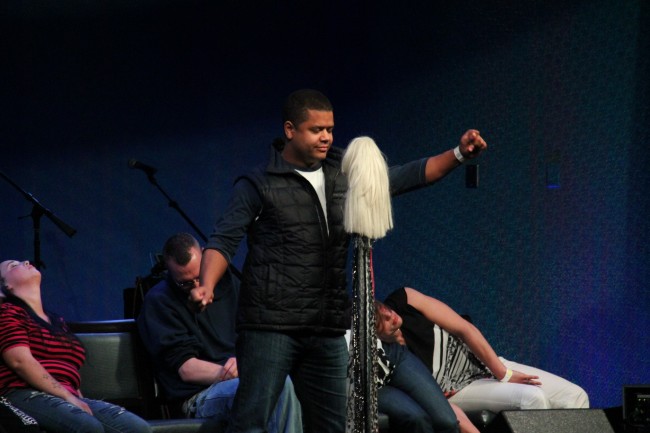
The show started with Stubbs at 8:00 p.m., with McKinney going on at 9:30 p.m., and people continued to line up to get in until midnight, still paying for admission.
McKinney said, “We received donations from New York, Tennessee, Colorado, Wyoming, Utah, Arizona, and many other states. Essentially, people bought tickets to a show they will never see. All for the cause.”
The show came together quickly after McKinney approached Tulalip with the idea for a benefit, motivated by his close connection with the area.
“Watching the news of Oso versus living here so close to it every day, it’s different,” said McKinney. “My first CD was cut in Darrington, for six months I drove through that area. I know where those houses were. But I can’t imagine living so close to this, where your brother’s girlfriend had a baby that was killed there, or where your mother and father died.” he said. He still lives in the area part time.

Aside from a few in-house costs, there was no money spent on the event. Advertising and other promotional information was donated for the event.
“We didn’t want one dollar of this event to be lost to expenses. Everything was handled pro bono by the Tulalip Resort. Everything came together, and we were able to pull this off in a week,” McKinney said.
“I am proud to announce that this event in the Cabaret was well attended and well executed. We had a goal to get $8 – $10K, through the efforts of the team, we had hit that by 11:00 p.m.,” Warbus added, noting that it truly was the audience that was driving the charitable efforts. “Guests were throwing money on stage, Chance was getting money while he played. He would announce where the guest was from while he was accepting the donation, the crowd loved it. After the event was over there was still more money coming in, guests were still giving on the way out.”

Andrew Gobin is a reporter with the See-Yaht-Sub, a publication of the Tulalip Tribes Communications Department.
Email: agobin@tulaliptribes-nsn.gov
Phone: (360) 716.4188
Tulalip mother pleads guilty to murder, mistreatment

Nineteen-month-old Chantel Craig died Oct. 8, 2012. Her mother has pleaded guilty to a murder charge.
By Chris Winters, The Herald
SEATTLE — A Tulalip woman charged with killing one daughter and neglecting another pleaded guilty in federal court Tuesday to one count of murder and another of criminal mistreatment.
Christina Carlson, 37, will likely receive eight to 13 years in prison when she is sentenced. That’s scheduled for July.
Had she been found guilty at trial, Carlson could have received a life sentence.
Carlson previously pleaded not guilty to the charges and was scheduled for a pre-trial hearing later this month.
Some of Carlson’s family members left the courtroom in tears as assistant U.S. attorney Tate London described the condition that Carlson’s daughters were found in.
Carlson showed no emotion and only answered “yes” when Magistrate Judge James Donohue asked whether she understood the charges and the plea agreement.
She was charged with second-degree murder in the death of her 19-month-old daughter, Chantel Craig. The toddler and her older sister, 3, were all but abandoned in a car on the Tulalip Indian Reservation in October 2012.
The toddlers were buckled in their car seats for hours. They had sores all over their bodies and were covered in feces, lice and maggots. Investigators believe they likely had gone days without food or water.
Chantel wasn’t breathing when paramedics reached her. An autopsy determined that she suffered from severe malnutrition. Her sister was treated for dehydration and skin sores from prolonged exposure to feces and urine.
The investigation into Chantel’s death includes more than 3,000 pages of reports and numerous video and audio files.
Prosecutors allege that Carlson withheld basic necessities of life from her children. In the hours before Chantel died, Carlson allegedly was sending text messages, attempting to buy drugs, court papers said. Witnesses reported seeing Carlson smoking heroin days earlier in the car while the girls were in the back seat.
Tests conducted on the older girl’s hair showed evidence that the child had been exposed to opiates.
Carlson and the girls had for months been the focus of on-again, off-again searches by state and tribal child welfare workers. Their grandmother called Child Protective Services in December 2011 with concerns that the girls were being neglected.
Carlson had lost custody of at least three other children because of her drug use and neglect, court papers said.
In a terrible coincidence, state social workers closed the investigation hours before Chantel died. They hadn’t been able to find her or Carlson. The woman and her daughters had for weeks been living in her car down a dirt road on the reservation.
Carlson is scheduled to be sentenced July 21.
Developer To Preserve Ancient Tequesta Village In Heart Of Miami
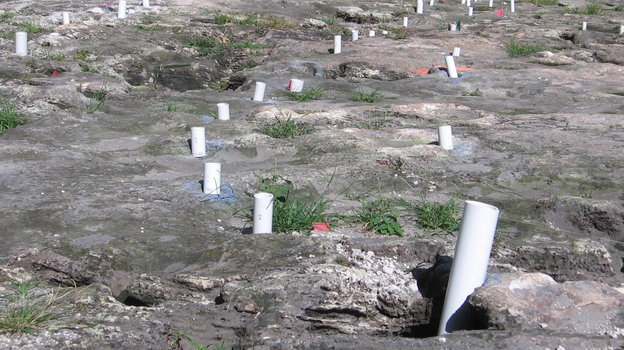
Greg Allen/NPR
by Greg Allen
April 08, 2014 NPR.org
In downtown Miami, amidst the office buildings, shops and high-rise condos, visitors will soon be able to see a site historians are calling Miami’s birthplace.
The spot where the Miami River meets Biscayne Bay used to be home to the Tequesta tribe, which is where Spanish explorers who first arrived in Florida in the early 1500s encountered them. Today, that spot is the heart of downtown Miami.
A developer began making plans last year to build on one of the last pieces of undeveloped land there. When the company called in archaeologist Bob Carr to first conduct a survey, he found what may be the oldest prehistoric town in the eastern United States.
When the topsoil was cleared away, Carr found a series of postholes bored into the limestone bedrock. The postholes form the outline of six circular structures: buildings that once were part of a major Tequesta village.
“The Tequesta were the native people of southeastern Florida,” Carr says. “They were certainly here when the Europeans arrived. They probably encountered Ponce de León, who apparently did land somewhere near the Miami River.”
The discovery of the village was a major archaeological find, one that rivals the discovery of a related site 15 years ago on the other side of the Miami River. Development there uncovered a much larger ceremonial site dubbed the Miami Circle. Preservationists raised money to save it, but little has been done since then to improve that site or interpret it for visitors.
The developer of the new site, MDM Development Group, recently reached an agreement with historic preservationists that will preserve the village and also interpret some of the most important elements.
MDM plans to build a retail, hotel and office complex on the site but as part of the agreement, the building’s lobby has been redesigned. It will now include a museum gallery with glass walls and flooring to showcase some of the Tequesta circles for visitors.
Architect and preservationist Richard Heisenbottle says that visitors will “be able to see the circle and the archaeological dig through a glass floor. And, at that same time, there will be a video that explains the history of the site.”
A second Tequesta circle will also be visible from the sidewalk and showcased in an area planned for a restaurant in another part of the complex.
Most of the rest of the prehistoric Tequesta village will be preserved under the building and accessible to researchers and archaeologists through a crawlspace.
It’s not all preservationists hoped for, but it is pretty close. Along with the Tequesta village, the site also contains elements from its later uses, when it was a military fort and then Miami’s first resort hotel. Those layers of history will also be preserved and explained to visitors.
“It does explain very clearly to everyone as we look at this, ‘This is where Miami came from,’ ” Heisenbottle says. “Miami’s earliest days are right there.”
Along with a movie theater and restaurants, the complex will now also have a history museum and interactive displays for visitors.
“If you go through Europe and you see how they’ve been able to marry the relationships between commerce and history, that’s what is proposed here,” says Eugene Stearns, who represents the developer.
Miami is one of America’s youngest cities, just a little more than a century old. This new archaeological find is a reminder that Florida is also home to some of the oldest settlements in North America.
“This will give you the opportunity to see both sides of the story, that we’re one of the oldest human habitation sites and we’re the youngest major metropolitan area,” says historian Arva Moore Parks.
Parks is hopeful that the planned museum and Tequesta village display could help bring new attention and money to the city’s other important prehistoric site — the Miami Circle








